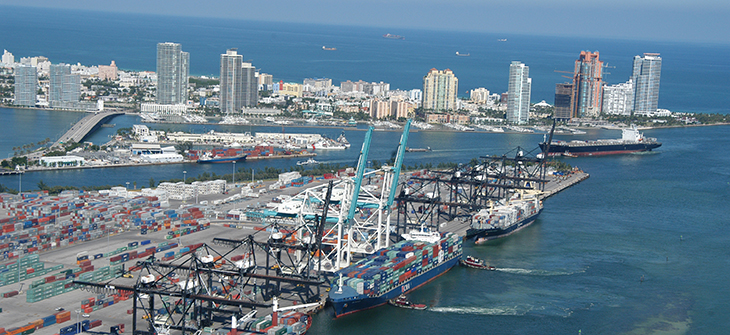International shipping consultancy firm, Drewry, has released a new report showing that most sea port projects across the West African region are now in uncertain waters amid a change in the location and nature of transshipment hubs serving the market, with Lekki and Badagry ports both in Nigeria being hard hit.
The report adds that overall regional activity has fallen by nearly 13 per cent since 2014, with more spectacular falls in some countries, particularly those with oil-based economies such as Angola (-50 per cent) and Nigeria (-30 per cent).
“As the region’s largest port market, Nigeria had attracted two substantial new port projects, Lekki and Badagry. Originally scheduled to be operational in 2016, Lekki was backed by ICTSI and CMA CGM, but ICTSI has announced its exit from the project, citing “delays in execution,” while its partner CMA CGM will likely follow, according to the shipping consultancy.
“The Badagry project meanwhile is backed by APM Terminals and TIL (MSC) but limited progress appears to have been made, and APMT now has a completely revised corporate strategy focused on optimising existing assets rather than developing greenfield new ones.
“On the other hand, the new Terminal Investment Limited (TiL) (MSC) hub at Lome, Togo, is growing fast. Having opened in 2014, it handled over 500,000 TEU in 2016.
Ethiopia opens largest cargo terminal in Africa⇒read more
Ocean carriers have many ways to serve the West Africa market. West Med ports have an established hub port role, serving the region from the outside, while within it Lome is becoming established, thanks to Mediterranean Shipping Company’s (MSC) backing.
“In the West African region, lines use deep-sea services that make direct calls at a wide range of West African ports, deep-sea services that call at a few main hub ports in West Africa, from where the smaller ports are fed, as well as services where cargo is ‘interlined’ via West Mediterranean hubs connecting east-west loops to services that run between these hubs and the full range of West African ports.
“Despite the decline in market volumes, MSC has been increasing the capacity on its single Asia-West Africa loop, where the average vessel size moved from 9,501 TEU to 11,374 TEU, a 20 per cent increase. In first-quarter 2016, a single vessel of 11,660 TEU was operating as the largest vessel in the loop, while in first-quarter 2017 there were three vessels of over 13,000 TEU.”
The calculated capacity increase of 20 per cent on the loop therefore will only have an impact if MSC can fill the extra capacity on the occasional sailings of the larger vessels, according to Drewry.


